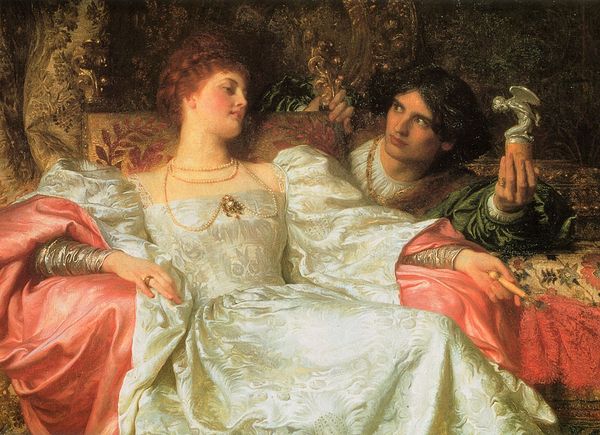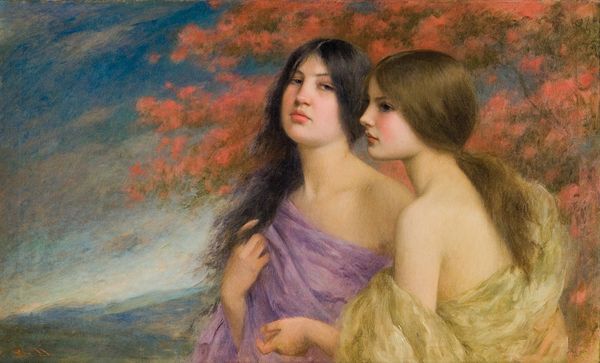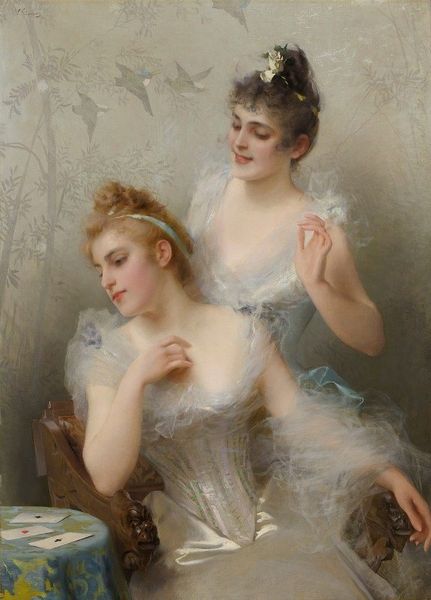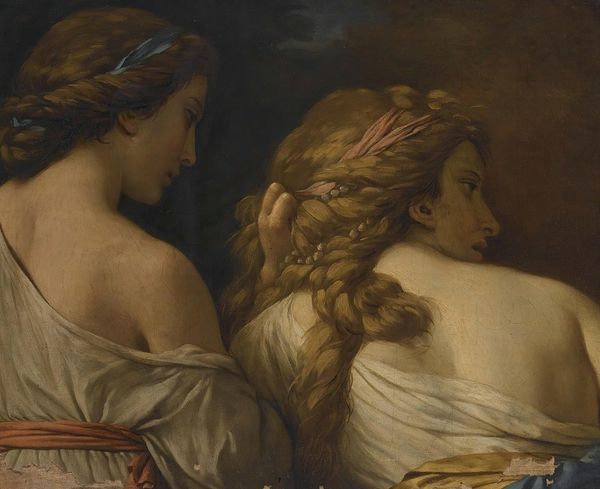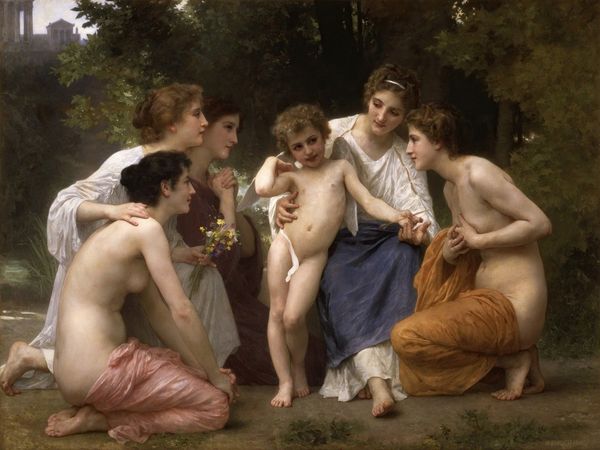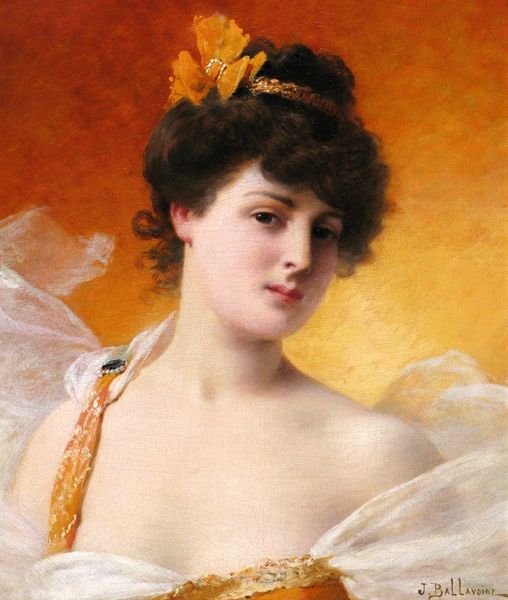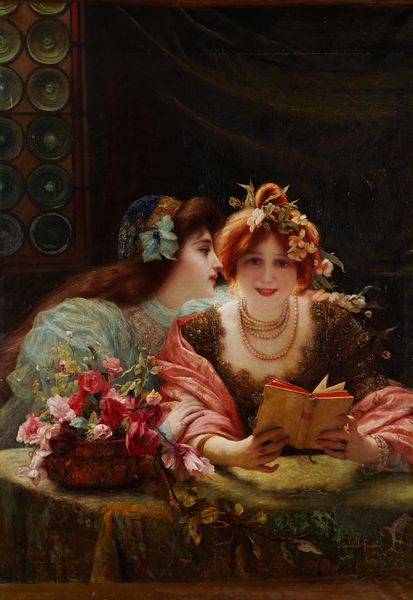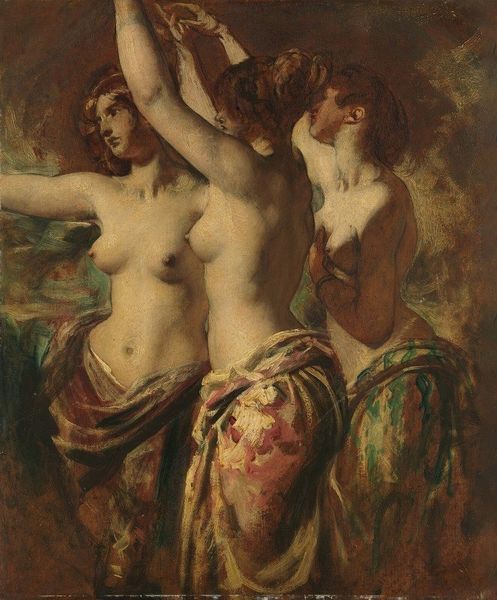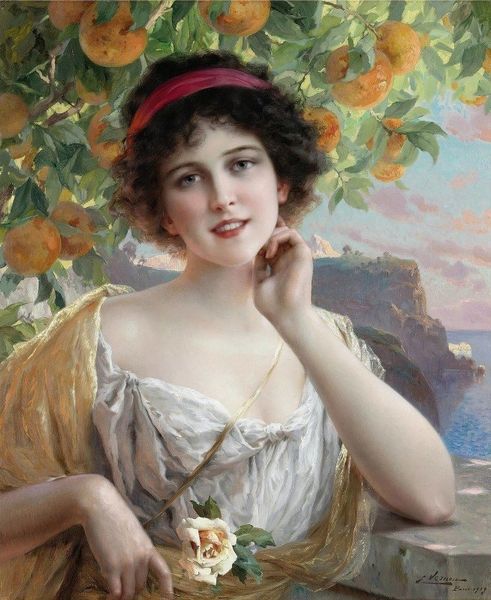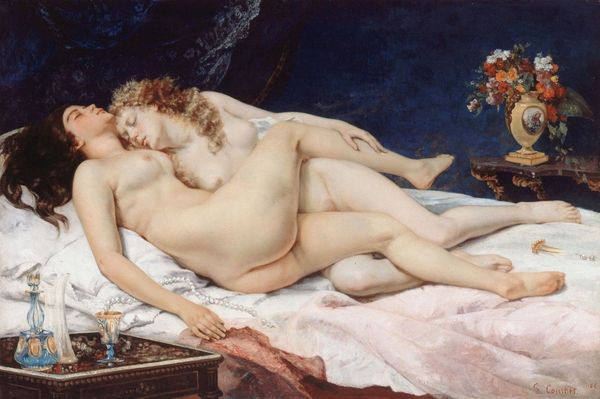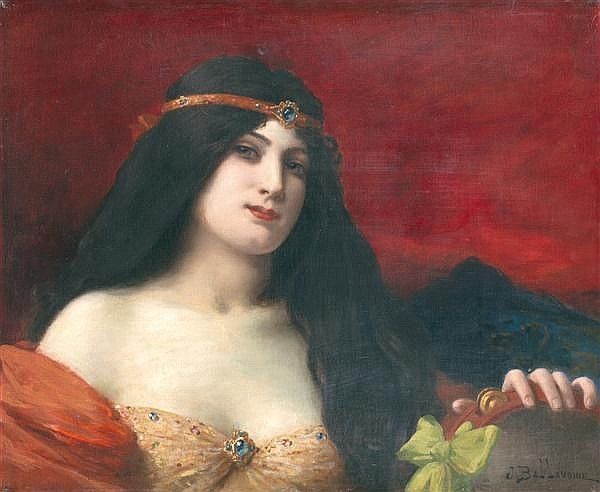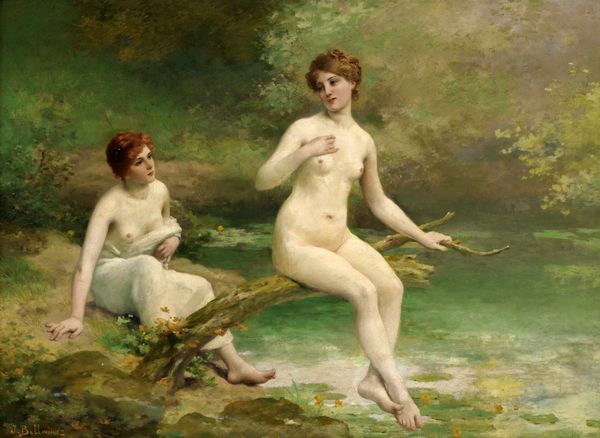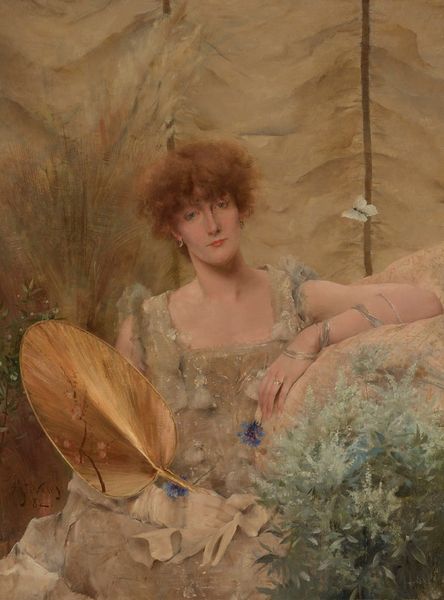
painting
#
portrait
#
character pose
#
character portrait
#
painting
#
fantasy illustration
#
figuration
#
portrait reference
#
romanticism
#
facial painting
#
animal drawing portrait
#
portrait drawing
#
genre-painting
#
facial portrait
#
academic-art
#
portrait character photography
#
celebrity portrait
Copyright: Jules-Frédéric Ballavoine,Fair Use
Curator: Let's take a look at this unsigned painting, attributed to Jules-Frédéric Ballavoine, titled "Untitled," of a pair of women, likely rendered in the late 19th century. Editor: Well, the first thing that strikes me is how soft the textures are, almost as if the artist wanted to capture the very feel of skin and draped fabric. It makes the whole image feel incredibly tactile and immediate. Curator: The intertwined figures evoke a strong sense of companionship, echoing Classical ideals of female friendships—perhaps alluding to mythological figures or allegorical personifications of virtues, rendered in this soft focus to present harmony and order. Editor: I’m interested in how this presumed intimacy becomes a constructed ideal. The clothing is really just sketched, giving way to the central question: are the textiles adding depth to a genuine connection, or simply veiling its artifice? The way it's painted, so smoothed and idealized, is suggestive of careful planning rather than real intimacy. Curator: You see the artifice in that smoothness, where I find timelessness. This aesthetic style harkens back to classical sculpture, portraying beauty and composure that resonate with deeper symbolic meaning, especially in light of 19th century artistic conventions of academic art. Editor: But conventions are exactly the point, right? Someone chose this pose, these fabrics, to represent these women. And they did so through material choices—paint, canvas—all of which cost labor and money. It speaks to the constructed image of ideal womanhood consumed during this period. What purpose does this consumption serve? Curator: It could offer a counter-narrative, a gentle rebellion within accepted societal norms, by subtly shifting power dynamics or inviting introspective contemplation of identity beyond conventional confines, like a romantic painter would. Editor: Maybe, but I keep returning to the almost clinical smoothness, like mass-produced porcelain. While there's softness, it feels deliberately rendered, manufactured even. Is this idealized affection hiding the realities of social control and material consumption? Curator: An interesting reading of potential visual critique! The artist has certainly offered enough elements to prompt thoughtful questioning. Editor: Yes, food for thought on image and labor. Thank you for the illuminating commentary.
Comments
No comments
Be the first to comment and join the conversation on the ultimate creative platform.
